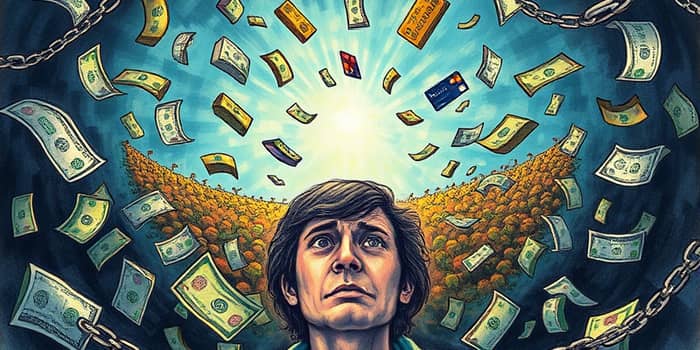
Paying only the minimum amount due on your credit card statement may seem like a convenient option when money is tight, but this practice can quickly turn into a financial nightmare. While it offers short-term relief, the reality of compound interest over decades and accumulating fees can keep you trapped in debt. Understanding the true cost of minimum payments is essential for breaking free and achieving lasting financial health.
In this comprehensive guide, we explore the structure of minimum payments, the real debt burden they create, recent trends driving more Americans into this pattern, and practical strategies to pay down balances faster. By the end, you will have the insight and tools to move beyond minimum payments toward a more secure future.
A credit card minimum payment is the smallest amount you must pay by the due date to keep your account in good standing. Typically, this payment is calculated as a percentage of your outstanding balance—often between 1% and 3%—or a fixed minimum amount, whichever is higher. In many cases, it consists of interest charges, fees, and only a tiny portion of the principal.
This design encourages consumers to pay the least possible amount each month, creating the illusion of manageability. However, by focusing on interest and neglecting principal reduction, minimum payments impose serious long-term financial risks on borrowers who maintain balances month after month.
High interest rates are the engine that powers the minimum payment trap. Many credit cards charge rates exceeding 18% APR, with some climbing above 20%. When you make only the minimum payment, most of your money goes toward interest, with little left to chip away at the balance itself.
For example, a $5,000 balance at an 18% interest rate, with a minimum payment of 2%, could take over 20 years to repay if you never add new charges. During that period, you would pay thousands of dollars in interest alone. Worse, automatic minimum payments can lull you into complacency: research shows 8% of all credit card interest paid results from users relying solely on automated minimum payments.
As a result, interest accumulation accelerates the debt burden, and balances may even grow if fees outpace payments. Missing a single minimum payment invites late fees, penalty APRs, and a slide toward delinquency or default, heightening the risk of financial ruin.
When you stretch a debt repayment over decades, the combined cost of interest and fees can far exceed the amount you originally borrowed. This not only impacts your bank account but also your long-term financial goals, such as buying a home, saving for retirement, or building an emergency fund.
This table highlights key figures illustrating the steep price of making only minimum payments. The longer a balance persists, the more your financial freedom is compromised. Mounting debt can force you to put off savings goals, delay investments, or fall back on high-interest borrowing for emergencies.
Maintaining a high credit utilization ratio—meaning a large fraction of your available credit is in use—can significantly damage your credit score, even if you pay on time. Lenders view high utilization as a sign of risk, which can lead to higher interest rates on other loans, difficulty qualifying for new credit, or outright denials.
When you miss a minimum payment, your account can be reported as delinquent after just 30 days. These marks can remain on your credit report for up to seven years, eroding your ability to secure favorable financing for major purchases such as a home or car. Avoiding the minimum payment trap is therefore also vital for protecting and improving your credit profile.
Recent data reveals a worrying shift in consumer behavior. Over the past three years, the share of accounts making only minimum payments has climbed, reaching a record 11.12% in late 2024. Meanwhile, 43% of cardholders admit to regularly paying just the minimum due.
This trend coincides with rising delinquencies: the 30-day delinquency rate jumped 10% to 3.52% in the third quarter of 2024. As more borrowers rely on minimum payments, the cycle of debt intensifies, creating a broader economic burden.
Breaking free from the cycle of minimum payments requires intention and a solid plan. The following strategies can help you accelerate your debt payoff and reclaim control of your finances:
By committing to pay more than the minimum due each month, you significantly reduce the time and money spent on credit card debt. Even a small increase—such as paying an extra 1% of your balance monthly—can shorten your repayment period by years and slash interest costs by thousands of dollars.
Shifting from minimum payments to a proactive repayment strategy may require sacrifice and discipline, but the payoff is substantial. You will not only save money but also alleviate stress, improve your credit score, and open opportunities for future financial growth.
Ultimately, understanding the hidden costs of minimum payments and embracing an aggressive payoff plan empowers you to reshape your financial destiny. Rather than settling for the least you owe, strive to pay more, break free from the cycle, and step confidently toward a debt-free future.
References













